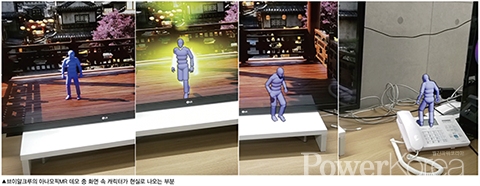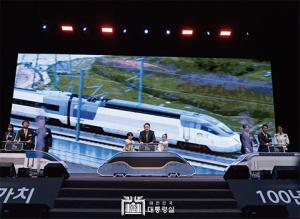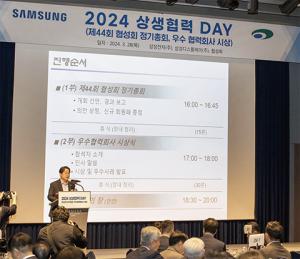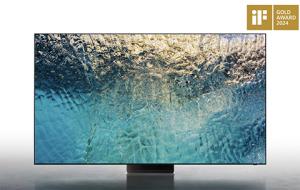 |
||
| ▲ VRCREW / CEO Sung Kwang Choi | ||
Spatial computing is a new paradigm in computing that redefines the way people interact with computers, creating new relationships between humans and machines, and between humans and things. It aims for a digital environment where users communicate with their computers in a way that goes beyond the monitor, keyboard, and mouse, and where all the objects in our space and surroundings become both input and output devices for the computer. Spatial computing does not distinguish between the natural human interaction with the environment and the use of computers; it is the most instinctive and intuitive way we are born with. For example, it allows us to use computers through gaze, voice, and gesture. Instead of interacting with the Internet through a screen on a device, users experience the entire world - homes, schools, buildings, and cities - as the Internet itself, blurring the lines between what is real and what is virtual. Metaverse, the augmented reality that Apple has been touting since its acquisition of Metaio eight years ago, is taking the convergence of the virtual and the real from a vague concept to the next level.
 |
The next step in mobile computing is spatial computing
A new internet for people, cities, buildings, and things
VRCREW CEO Sung Kwang Choi explains “The most important thing about modern computers, the thing we use them for the most today, the place where almost everything you can do with a computer happens, is the Internet today. The Internet creates new areas of value by connecting seemingly unrelated things. Things like being able to send money by sending an email are examples of this. The Spatial Web connects real-world spaces and objects to each other over the Internet, allowing agents to access them as if they were accessing a website. When artificial intelligence and robotics are added to this spatial web, we will be able to interact with objects as if we had superpowers through augmented reality. In the near future, the spatial web will revolutionize the way we perceive the world and acquire information, and revolutionize the way we interact with it.”
VRCREW’s VPS technology is the most precise in the field
The secret to spatial computing where reality and virtuality coexist is location information
VRCREW’s VPS can superimpose the real world and the digital twin to within a centimeter of each other. This precision extends the scope of spatial computing to areas that traditional GPS technology has not reached. Spatial computing now allows virtual beings to interact with real-world objects as if they were part of the real world, giving us superpowers and control over reality that were only possible in the virtual world. The company’s slogan, “Software into matter. Space into the Internet.” captures this vision of a future where the virtual and the real coexist.
 |
Cloud OS is the ‘external brain’ for spatial computing
Spatial computing OS development accelerates with 2025 launch target
In this era of spatial computing, where space itself becomes a living computer, what connects data from the physical and digital worlds? Choi says it’s Cloud OS. “If we want to reduce the power consumption even further than that and go for very extreme low power, but at the same time get supercomputer-like high performance computing, then we’re going to have to take the OS back out and put it in the cloud. Because wearables and IoT devices like AR glasses are wireless and limited by battery capacity and heat management, apps for spatial computing enabled by these devices must run in the cloud. So the OS to run those apps is bound to be in the cloud as well, which is why Cloud OS is not an option for spatial computing, but a necessity.” Cloud OS for spatial computing includes digital twins as “three-dimensional overlays” that are sophisticatedly superimposed on reality to obtain information about or interact with real-world objects. This is where VPS technology comes in to play, as it allows you to bring your digital twin into the real world in a sophisticated way. Choi said that the company is developing such a spatial computing OS, or “Liminality OS,” with the goal of launching it in 2025. With Liminality OS, the company hopes to turn our homes, schools, buildings, and cities into living computers by connecting digital twins, augmented reality, artificial intelligence, and robots.
 |
The biggest use of spatial computing OS is in combination with artificial intelligence
Spatial web and multimodal AI will revive the semantic web
Choi points out that the current AI revolution is still a tempest in a teacup. “Everyone is talking about an artificial intelligence revolution, but the truth is that all it can do is do ‘trivial’ things like search for you, write a report for you, or draw a picture for you. It can’t yet solve real-world problems, like global warming. What if we let it solve real-world problems and optimize the reality we live in? By connecting AI to the digital twin, the spatial web, it will be able to go beyond understanding past knowledge through texts on the internet, and will be able to perceive the real world we live in in real time and control it directly. The city of Hangzhou, China, has a severe traffic problem, and solving the traffic congestion in the city center was a major challenge in the process of introducing a smart city. The city provided CCTV footage of the roads to the city’s brain, City Brain, and gave it control over the real world so that it could control the traffic lights in the city center in real time. By doing so, the city was able to optimize urban traffic and achieve a miraculous result of reducing the arrival time of ambulances to the scene by 50%. Solving real-world problems and optimizing the world is the ultimate use of AI.” Choi explained that just as the text-based Internet was connected to the existing large-scale language models, the connection of multimodal AI to the spatial web will allow AI to understand and manipulate the real world, marking the beginning of a true AI revolution. Artificial intelligence that understands the world through the Internet, and augmented reality to interact with it, is what Choi hopes to achieve with the Spatial Computing OS.
원헤레나 기자 hywon65@gmail.com







